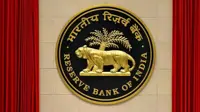India’s economy to expand at 7.7% in 2018-19: IMF
09 May 2017
India's economic growth is expected to rebound to 7.2 per cent in the 2017-18 fiscal and further to levels around 7.7 per cent in 2018-19 as the country leaves behind the temporary disruptions caused by demonetisation, the International Monetary Fund (IMF) said today.

For India, the IMF's Regional Economic Outlook report said, while the temporary disruptions (primarily to private consumption) caused by cash shortages accompanying the currency exchange initiative are expected to gradually dissipate in 2017, it recommended the removal of long-standing structural bottlenecks to enhance market efficiency.
IMF cited a favourable monsoon season and continued progress in resolving supply-side bottlenecks as facilitators that would help investments recover. However, the recovery is expected to be modest and uneven across sectors as deleveraging takes place and industrial capacity utilisation picks up, it noted.
''In India, growth is projected to rebound to 7.2 per cent in FY2017-18 and further to 7.7 per cent in FY2018-19,'' the IMF said.
''Headwinds from weaknesses in India's bank and corporate balance sheets will also weigh on near-term credit growth. Confidence and policy credibility gains, including from continued fiscal consolidation and anti-inflationary monetary policy, continue to underpin macroeconomic stability,'' the IMF said.
Growth in Asia as a whole is forecast to accelerate to 5.5 per cent in 2017 from 5.3 per cent in 2016.
IMF revised growth in China and Japan upward for 2017 compared to the October 2016 World Economic Outlook, owing mainly to continued policy support and strong recent data.
Growth in South Korea has been revised down due to political uncertainty.
Over the medium term, slower growth in China is expected to be partially offset by an acceleration of growth in India, underpinned by key structural reforms.
According to the report, in India, improving productivity in the agriculture sector, which is the most labour-intensive sector and employs about half of Indian workers, remains a key challenge.
More needs to be done to address long-standing structural bottlenecks and enhance market efficiency, including from liberalising commodity markets to giving farmers more flexibility in the distribution and marketing of their produce, which will help raise competitiveness, efficiency, and transparency in state agriculture markets, it said.
In addition, input subsidies to farmers should be administered through direct cash transfers rather than underpricing of agricultural inputs, as such subsidies to the agriculture sector have had large negative impacts on agricultural output, IMF said.
Growth in the Middle East and Central Asia is set to pick up in 2017 as external factors improve. After a disappointing 2016, growth is expected to be 3.1 per cent in 2017 and 4.1 per cent in 2018. This is largely due to firmer growth in Russia, an upgraded outlook for China, and a partial recovery in commodity prices, IMF stated in its regional economic outlook.
The IMF report also called on Asian economies to learn from Japan's experience and act early to cope with rapidly ageing populations, warning that parts of the region risk ''getting old before becoming rich.''
Asia has enjoyed substantial demographic dividends in the past decades, but the growing number of elderly is set to create a demographic ''tax'' on growth, the IMF said in its report.
''Adapting to ageing could be especially challenging for Asia, as populations living at relatively low per capita income levels in many parts of the region are rapidly becoming old,'' the report said. ''Some countries in Asia are getting old before becoming rich.''
The population growth rate is projected to fall to zero for Asia by 2050 and the share of working-age people - now at its peak - will decline over the coming decades, the report said.
The share of the population aged 65 and older will increase rapidly and reach close to two-and-a-half times the current level by 2050, it said.
That means demographics could subtract 0.1 percentage point from annual global growth over the next three decades, it said.
The challenges are particularly huge for Japan, which faces both an ageing and shrinking population. Its labour force shrank by more than 7 per cent in the past two decades, the IMF said.
The high percentage of its citizens living on pensions may be behind Japan's excess savings and low investment, which are weighing on growth and blamed in part for keeping inflation below the Bank of Japan's 2 per cent target, the report said. ''Japan's experience highlights how demographic headwinds can adversely impact growth, inflation dynamics and the effectiveness of monetary policy,'' it said.
.webp)





.webp)

.webp)
























